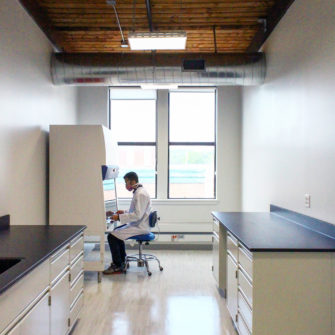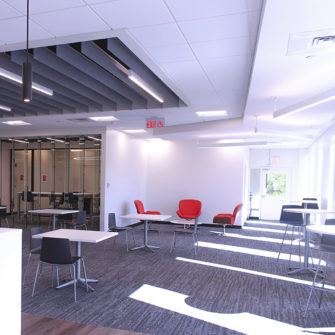One of today’s most active areas of construction lies in tenant improvements to existing buildings. Particularly in the life sciences sector, there is constant churn as companies mature and move into larger spaces to meet their growing space demands. Remarkably adaptable, most developers have a mix of buildings in their portfolios ranging from the 19th century through brand new construction to offer to potential tenants. So, as a tenant, it is important to be aware of the sometimes hidden issues associated with renovation and restoration that should become a part of the due diligence phase. We’ve asked both a structural engineer and a builder to comment on a few of the issues that they feel are often overlooked during this process.
According to John Matuszewski, a principal at McNamara/Salvia structural engineers, load bearing masonry buildings pose a particular challenge. “A number of our clients are looking at purchasing or leasing older mill buildings for reuse and adaptation and are unaware of the code requirements associated with the structural systems”, he commented. While Massachusetts uses the International Existing Building Code (IEBC 2009) as its model code, the state has added amendments that invoke Appendix A1 for masonry buildings. According to Matuszewski, this amendment can trigger significant reinforcement of the existing load bearing masonry if the project area exceeds 50% of the building. “In some cases, we’ve seen mid six-figure costs associated with these upgrades”. If this requirement is not understood early on in the process, it can have a dramatically negative implication on the strategy of the project. This is particularly true if the responsibility for these upgrades is not clearly delineated in the lease or purchase agreement.
Andy Coull, president of JM Coull, builders from Maynard, echoes this concern. “An area of potential conflict arises when a building is leased from a landlord for renovation or retrofit. The responsibility for things like hazardous materials abatement, code compliance and other changes to existing conditions can often be open to interpretation”, he says. A prime area of his firm’s expertise is in the conversion of existing buildings to high technology facilities for research, development and manufacturing. Coull adds, “It is important to eliminate gray areas within the lease because, once it is signed, it becomes the guiding document relative to who will pay for certain aspects of the renovation”. There is often significant pressure at the early stages of project to get the deal done and to focus on the immediate next steps, sometimes at the expense of looking at the life span of the deal. “Even though five, ten or fifteen years seems like a long ways away, don’t forget to look at and negotiate what is required at the end of the lease relative to returning the building to pre-lease condition. This can be very costly”, he cautions.
This is an excerpt from an article written by Mark Reed for High-Profile. Read the full article »

